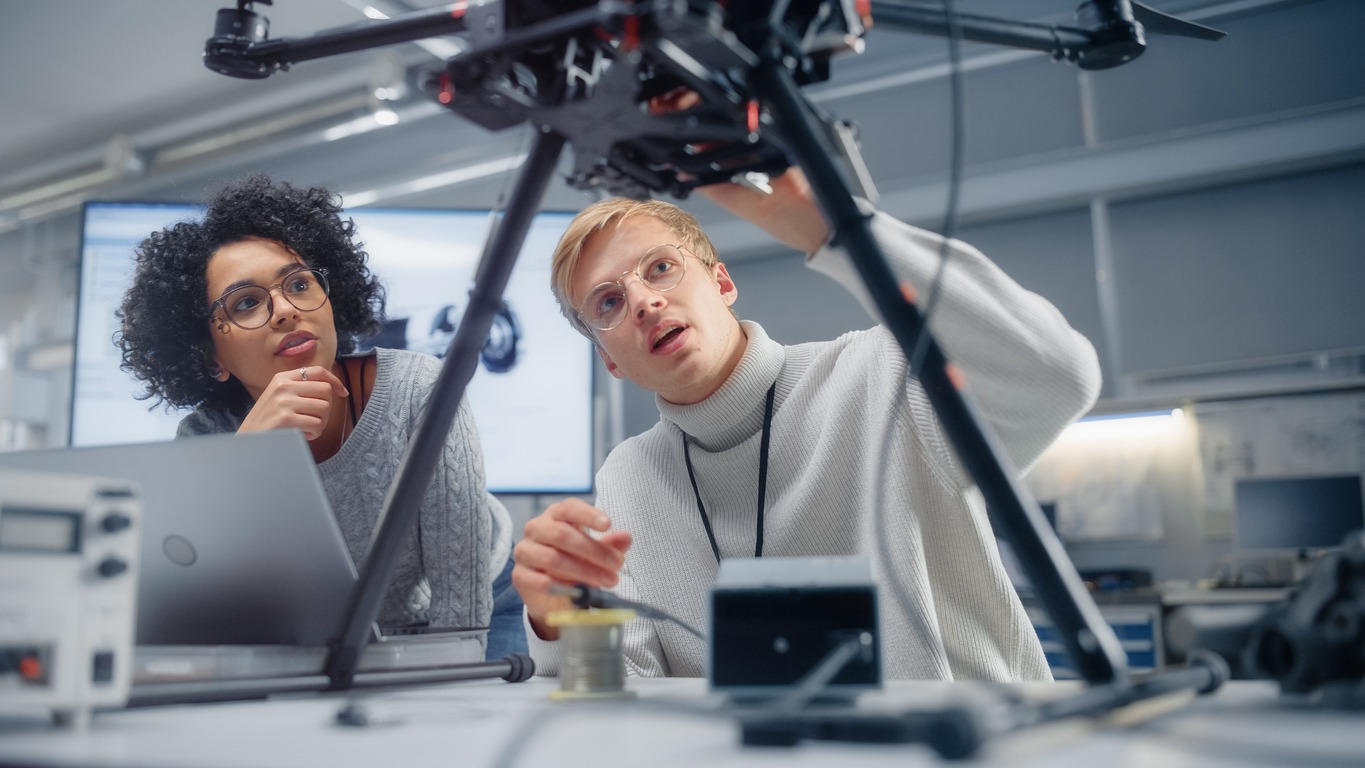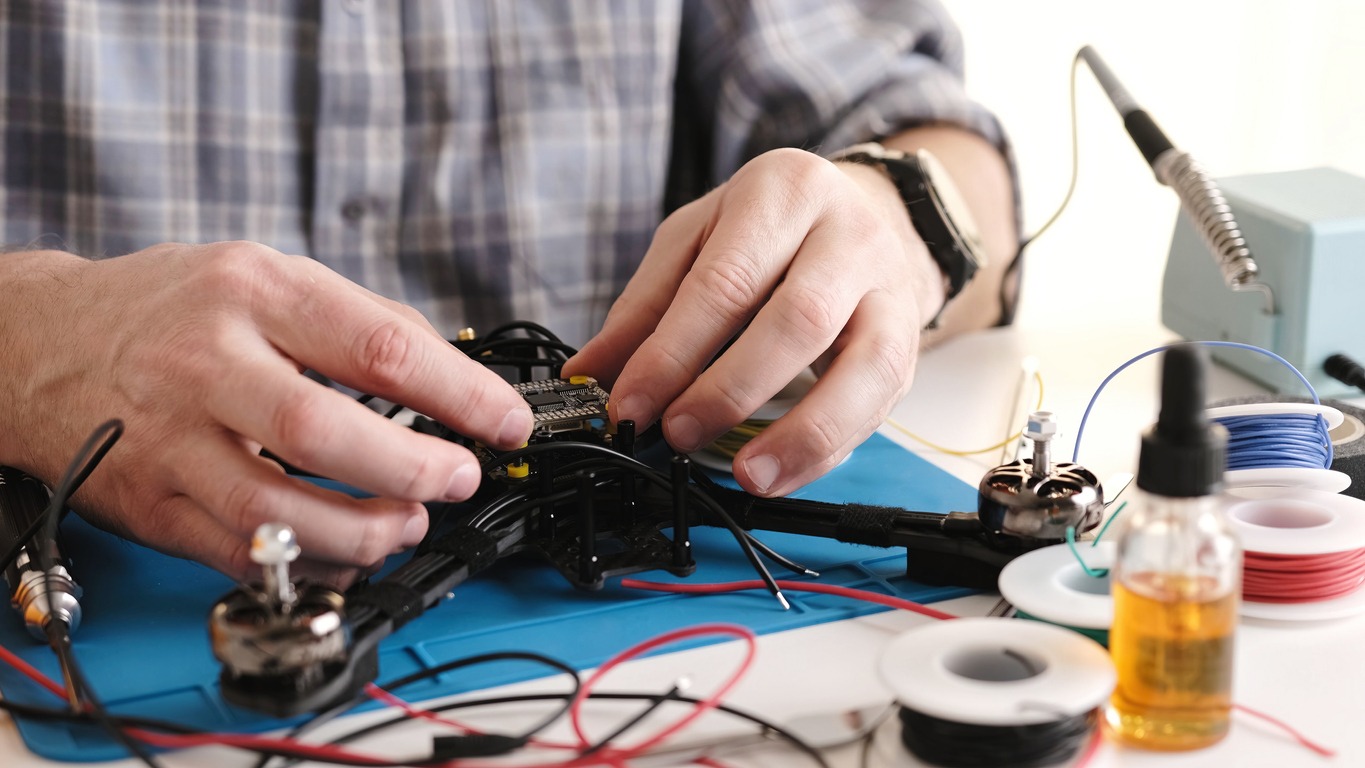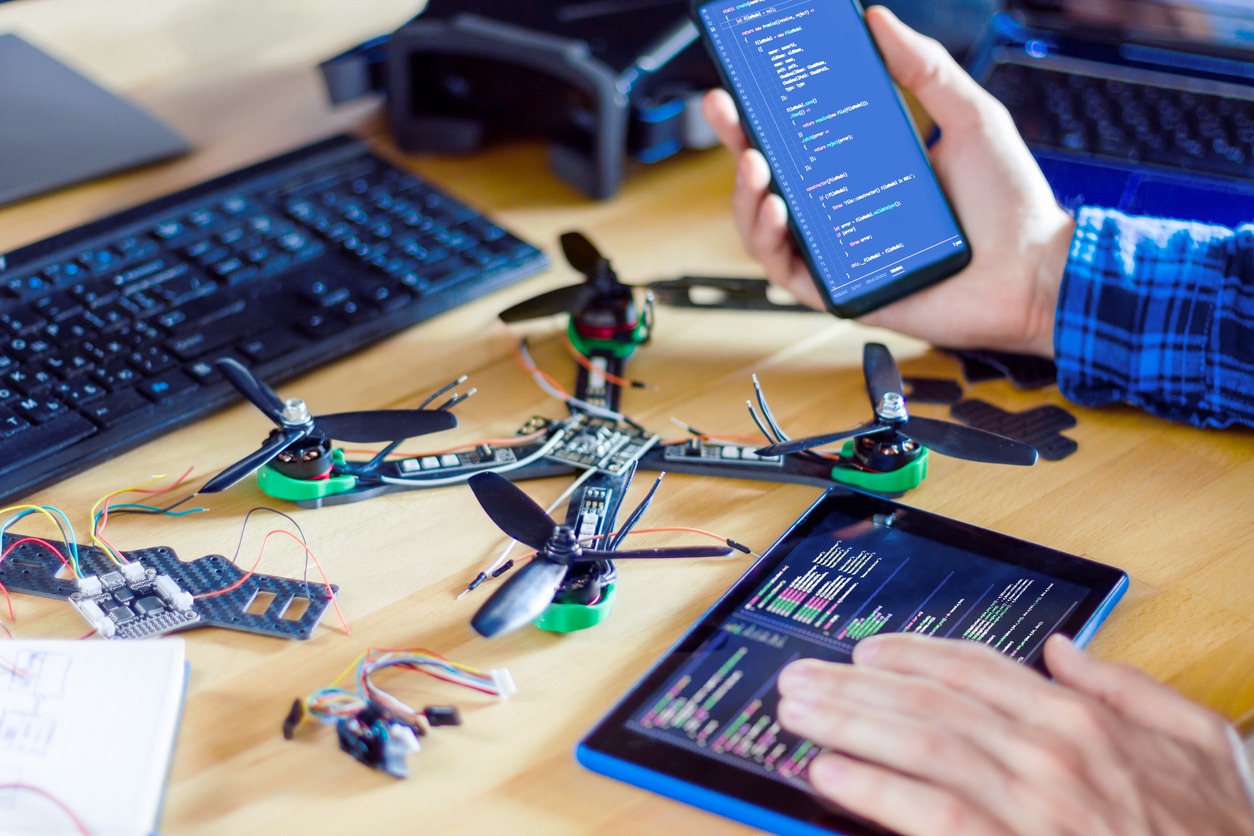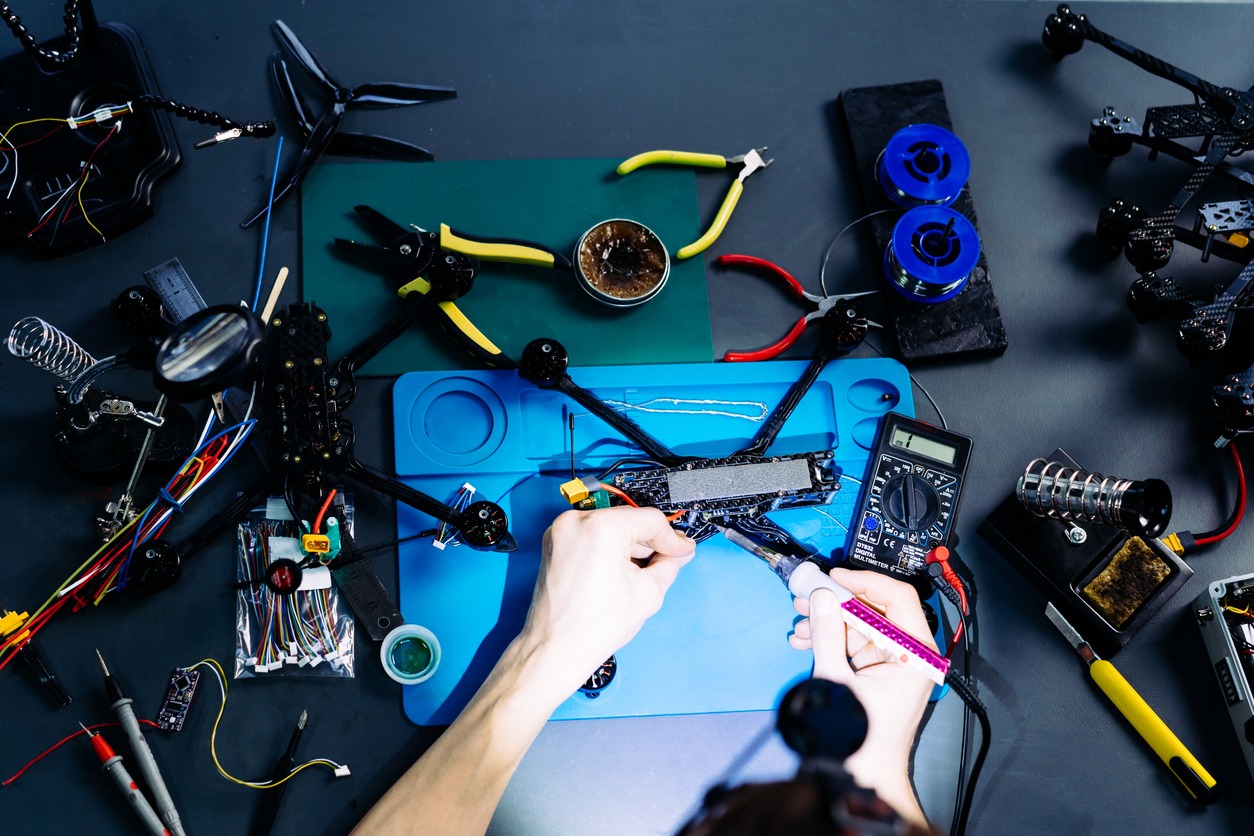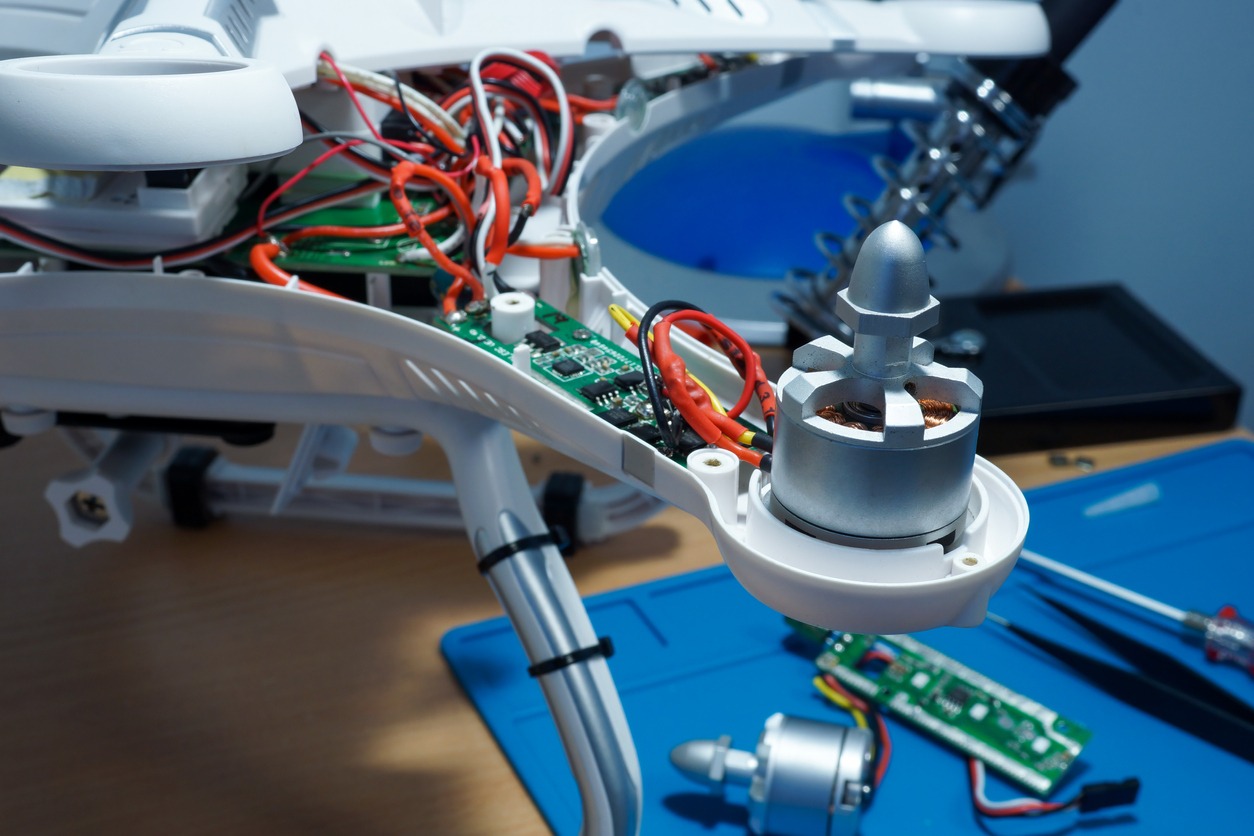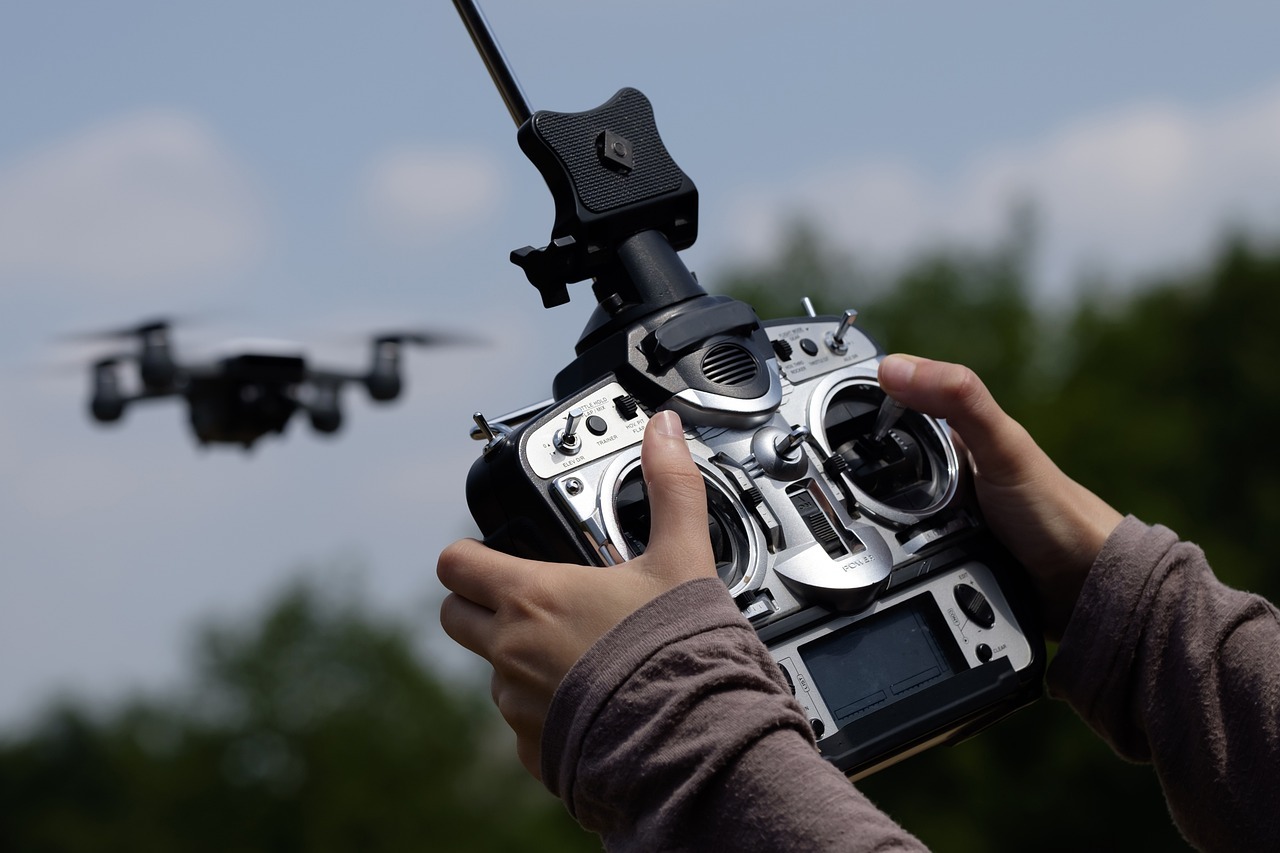In recent years, the integration of drone technology into educational settings has gained significant traction. Drone kits offer students a unique opportunity to engage with a hands-on learning method that combines the excitement of flight with the principles of STEM (Science, Technology, Engineering, and Mathematics) education. These kits serve as an innovative tool to teach students coding, aerodynamics, robotics, and problem-solving skills, providing both a practical and theoretical understanding of these subjects.
Drone education programs, supported by interactive apps and comprehensive STEM curricula, are now widely adopted in schools. These programs are designed to make learning programming more accessible, catering to a range of educational levels. As students build and code their own drones, they are introduced to real-world applications of emerging technologies, which can stimulate both interest and proficiency in technical disciplines.
The market offers various educational drone kits such as Robolink CoDrone Lite and Pro, Ryze Tello EDU, and Parrot Mambo Drone, each with its own set of features catering to different educational needs. These kits often come with online classes or resources that encourage self-paced learning. With the right drone kit, educators are equipped to elevate student engagement and provide a view on technology that combines both the thrill of innovation and the rigor of scientific inquiry.
Benefits of Drone Kits in Education
Drones have taken flight in educational spaces, enriching the curriculum with hands-on applications in STEM and beyond. These kits serve as practical tools, allowing students to witness and engage with the core principles of science, technology, engineering, arts, and mathematics (STEAM).
Enhancing STEM Education
Educational drone kits offer a tactile experience for students to explore and understand the fields of STEM. By building and programming their own devices, they engage with key concepts in a real-world context. For instance, students programming a drone can directly see the link between coding and its physical outcomes, offering an invaluable demonstration of mathematics and engineering principles in action.
Cultivating Critical Thinking and Problem-Solving
Drone kits challenge students to think critically and solve problems. As they navigate through the assembly and operation of drones, they must assess situations, analyze possible solutions, and execute their decisions. This process sharpens critical thinking skills and fosters an environment where problem-solving abilities can be practiced and refined.
Inspiring Creativity and Innovation
Drones in education also serve as a canvas for creativity and innovation. When students are given the opportunity to design flight paths, they are not only applying scientific and mathematical knowledge but also integrating the arts, demonstrating how STEAM coalesces. Through experimentation and design, students discover novel applications for drones, potentially sparking inspiration for future technological advancements.
Components of Drone Kits
Drone kits provide students with hands-on learning experiences. They include essential components required to assemble and operate a small drone. These components offer a practical insight into the engineering behind UAVs (Unmanned Aerial Vehicles).
Understanding the Hardware
The hardware of a drone kit typically includes the frame, drone motors, propellers, and a flight controller. Students learn how these parts interconnect to create a stable flying machine. The flight controller acts as the brain, managing the drone’s movements. Drone motors are crucial for propulsion and control, determining the drone’s ability to lift and maneuver.
Exploring Different Sensors
Different sensors in a drone kit play pivotal roles in flight dynamics. An infrared sensor can be used for altitude sensing, obstacle avoidance, or thermal imaging. A barometer sensor helps maintain steady flight at a particular altitude by measuring atmospheric pressure. These sensors feed real-time data to the flight controller for responsive flight behavior.
Power Sources and Battery Safety
Battery safety is essential in drone operation. Drone kits usually include a LiPo battery (Lithium Polymer) which is lightweight yet powerful. Understanding the correct handling and storage of LiPo batteries is critical as they are sensitive and can be dangerous if mistreated. The power source determines the drone’s flight time and agility.battery safety guidelines are emphasized to ensure safe and sustainable use.
Programming and Software
Incorporating drones into educational programming introduces students to the practical applications of coding languages such as Python, Scratch, and JavaScript, using platforms that promote interactive learning.
Introduction to Coding with Drones
Educational drones like the Tello drone leverage the user-friendly Scratch interface to teach coding fundamentals. Students write simple commands using drag-and-drop blocks that control the drone’s movements, introducing them to basic programming concepts within a tangible, real-world context.
Popular Programming Languages for Drones
- Scratch: A block-based visual programming language ideal for beginners, used widely with the Tello drone.
- Python: Advanced students often use Python with drones like the CoDrone Lite to execute more complex maneuvers and functions.
- JavaScript: Some platforms allow for JavaScript coding, offering a more diverse programming experience.
- Block-based languages: Tools like Blockly introduce the principles of coding through blocks that snap together to form programs.
- Arduino: Linked to drones such as the CoDrone Pro, it uses C++ variant which makes it suitable for programming the hardware.
Software Platforms and Simulation
- DroneBlocks: This is an interactive app that utilizes block coding to program drones, making it accessible and engaging for learners of all levels.
- Simulators: Software simulators allow students to test their code virtually before applying it to the physical drone, providing a safe learning environment.
- Development environments: Platforms are available that provide an entire ecosystem for coding, testing, and flying drones, suitable for both individuals and classroom settings.
Curricular Integration
Incorporating drone technology into educational settings enhances STEM programs and equips students with practical skills. Schools and colleges are progressively recognizing the importance of this integration, tailoring curriculum to include drone studies.
Implementing Drone Kits in School Programs
School districts have begun to introduce drone kits into their classroom learning environments, frequently as part of their STEM (Science, Technology, Engineering, and Mathematics) or STEAM (STEM + Arts) education offerings. When implementing drone kits, schools typically incorporate a blended learning approach that combines theoretical knowledge with hands-on experience. For instance, programs may use DroneBlocks curriculum, which includes an intuitive app allowing students to construct flight plans through a drag-and-drop interface. This can be adapted for various educational levels, from primary schools to high schools.
Alignment with Educational Standards
Curricula involving drone technology are designed to align with national and state educational standards. For example, they aim to meet the Next Generation Science Standards (NGSS) or Common Core State Standards in mathematics and literacy. Drone curricular activities may cover:
- Mathematics: Calculating flight paths and understanding geometric shapes in three dimensions.
- Science: Applying principles of aerodynamics and physics through drone flight.
- Technology: Learning about remote sensing and GPS technology that drones commonly use.
- Engineering: Understanding drone construction and electronics through the assembly of drones.
This multidisciplinary approach ensures that the use of drone kits not only complements existing curricula but helps schools meet their educational objectives.
Role of Drones in Vocational Training
In vocational training and Career and Technical Education (CTE) programs, drones serve a practical role. They prepare students for specific careers in fields such as Unmanned Aircraft Systems (UAS), where knowledge of drone operation and regulations is imperative. Many college-level programs and some high schools collaborate with the Federal Aviation Administration (FAA) to align their offerings with industry standards, thereby enhancing job readiness in this fast-growing sector.
Practical Drone Operations
Practical Drone Operations encompass essential skills for student drone pilots, such as understanding the foundational principles of flight, stringent adherence to safety and legal protocols, and proficiency in maintenance routines.
Flight Basics and Aerodynamics
When students begin with drone operations, they must first grasp the Flight Basics and Aerodynamics. The foundations of flight tie into handling Throttle, Pitch, Roll, and Yaw to achieve stable flight and maneuvering. The Tello Drone is a suitable model that often includes features like auto take off and landing, helping novices to focus on these flight basics. Understanding aerodynamics is crucial for both safety and success in applications such as drone racing.
Safety Protocols and Legal Considerations
Safety Protocols are paramount. Students must learn to inspect their drones pre-flight, operate within line of sight, and avoid no-fly zones. Legal considerations include age restrictions and registration requirements. Using artificial intelligence (AI) embedded within drones, operators can enhance safety; for instance, with AI, drones can autonomously avoid obstacles or navigate to mission pads without direct pilot intervention.
| Legal Requirement | Description |
|---|---|
| Age Restrictions | Pilots must adhere to the age guidelines set by regulatory bodies. |
| Registration | Drones of certain weights require registration with aviation authorities. |
| No-fly Zones | Awareness of and compliance with airspace restrictions is essential. |
Maintenance and Troubleshooting
Regular Maintenance and Troubleshooting ensure drones remain in good working order and flight-ready. This includes checking motor function, battery life, and propeller integrity, as well as updating firmware. Troubleshooting skills help pilots quickly resolve issues such as signal loss or unresponsive controls, ensuring minimal downtime and extending the life of the drone.
Selecting the Right Drone Kit
When introducing drone technology into an educational setting, choosing the right drone kit is crucial for maximum engagement and learning. The decision can impact students’ understanding of concepts across science, technology, engineering, and mathematics disciplines.
Factors to Consider
When selecting a drone kit for educational purposes, there are several factors to be considered:
- Skill Level: Kits like the Sky Viper e1700 are suitable for beginners, offering a straightforward assembly process and basic piloting controls.
- Educational Content: Select drone kits that align with educational standards like NextGen Science Standards.
- Durability: Drones such as the Parrot Mambo Fly are known for their robustness, beneficial for frequent classroom use.
- Flight Time: Look for drones with a longer flight time to ensure ample practice and learning moments.
- Extras: Kits like Makeblock Airblock offer modularity and programmability, adding depth to the learning experience.
Top Drone Kits for Educational Purposes
Here are some of the top drone kits that are recognized for their educational value:
- DJI Tello EDU Drone: Known for its versatility and programmable features, it’s designed to teach coding as well as piloting skills.
Drone Model Features DJI Tello EDU Drone Programmable, 13-minute flight time, compatible with VR goggles Ryze Tello 5-megapixel camera, Scratch programming, 13-minute flight time Codrone Lite Affordable, programmable, 8-minute flight time - Ryze Tello Drone: Provides an introduction to drone technology with a 5-megapixel camera and compatibility with Scratch programming, an approachable coding platform.
- Sky Viper e1700 Stunt Drone Kit: This is suitable for teaching the basics of drone flying and stunts without overwhelming the student.
- Parrot Mambo Fly: Offers a durable design and the opportunity to learn through play, which can be an effective educational approach.
- Makeblock Airblock: An innovative kit that transforms from a hovercraft to a drone, teaching aerodynamics and programming simultaneously.
Beyond the Classroom
Educational drone kits serve as a gateway to advanced applications of drone technology in various sectors, priming students for future engagements in specialized fields and industries.
Drones in Advanced Education and Research
Institutions of higher education leverage drone technology as an integral component of fields like robotics and IoT (Internet of Things). Research projects often deploy drones to gather data remotely, be it for environmental monitoring or to inspect infrastructure. Colleges and universities incorporate drones into coursework, providing practical experience that aligns with cutting-edge research interests and technological advancements.
Career Opportunities and Industry Applications
The proficiency gained from educational drone kits extends into numerous career paths where drone expertise is highly valued:
- Military: Drones play a crucial role in modern warfare and surveillance, requiring operators with sophisticated skill sets.
- Real Estate: High-quality aerial photography and videography catalyze property showcases, with drones offering unique perspectives.
- Transportation: Drones contribute to logistics, especially in delivering goods to remote locations.
- Drone Racing: This emerging sport demands technical know-how in both piloting and drone customization.
- Professional Development: Training courses and certifications in drone operations cater to ongoing learning within the workforce.
Additionally, these skills transfer to areas like disaster response, agricultural assessment, and urban planning, reflecting the robust integration of drones across multiple industries.
Supporting Resources
Effective implementation and utilization of educational drones require a robust network of supporting resources. These resources aid educators in comprehensively integrating drones into their STEM programs, ensuring both teaching staff and students can maximize the benefits of drone technology in the classroom.
Educational Platforms and Communities
Educational Platforms: Companies like DroneBlocks offer an online curriculum coupled with a free app specifically designed to engage students with drone technology. The app’s drag-and-drop coding interface is particularly beneficial for building students’ understanding of programming flight plans, fostering a hands-on learning environment.
Communities: National organizations and school districts often form communities to distribute educational drone kits widely. They provide a forum for educators to share best practices, challenges, and successes related to drones in education, promoting an ongoing exchange of knowledge and experiences.
Professional Development and Teacher Training
Professional Development: Dedicated to ensuring educators are well-equipped to teach drone-related content, professional development programs provide necessary training on the safe operation of classroom drones, as well as how to integrate them into existing curricula effectively.
Teacher Training: Programs recognized by entities such as the Federal Aviation Administration (FAA) often include specific training on the principles of aviation and engineering, as well as the latest regulations governing the use of drones. This foundational knowledge is crucial for teachers to confidently conduct a STEM program that includes the use of drones.
Financial Considerations
When integrating drone technology into school curriculums, educators and administrators must navigate the financial aspects with precision. Acquiring drone kits for educational purposes requires careful budgeting and an understanding of available funding sources.
Funding and Grants
School districts may have access to federal funding designed to enhance technological learning and STEM programs. Utilizing these funds requires adherence to specific usage guidelines, which often prioritize the purchase of educational technologies like drones. Grants from government entities and private organizations can also provide the necessary financial support for schools to procure drone kits. Teachers and school administrators are encouraged to investigate and apply for such opportunities, which may require detailed proposals explaining the educational value of drones in their programs.
Examples of potential grant sources:
- Federal education technology grants
- STEM initiative funds
- Private educational foundation grants
Budgeting for Drone Kits
Budgeting for drone kits goes beyond the initial purchase price; it must encompass all related costs, including maintenance, storage, and training materials. Schools should allocate resources carefully, ensuring they select drone kits that offer both educational value and cost-effectiveness. The initial investment in drone technologies can vary significantly based on factors such as the desired model, durability, and included features.
Considerations for budgeting:
- Initial cost: Price of the drone kit itself.
- Maintenance: Ongoing care and potential repair costs.
- Training: Resources required to educate staff and students on safe and effective drone usage.
- Additional resources: Costs for supplementary materials such as manuals, curriculums, and software.
Schools may opt to start small, with entry-level models that allow for introductory learning experiences, before investing in more advanced drone systems as their programs grow. It is also vital for school districts to consider future drone technology advancements and the corresponding impact on their long-term budget.
Frequently Asked Questions
Educators and students often have questions about integrating drones into educational settings. This section aims to address common inquiries regarding DIY drone kits, programming, and their role in STEM education.
What components are typically included in a DIY drone kit for educational purposes?
A typical educational DIY drone kit includes an assembly frame, motors, propellers, a controller board, sensors, and a battery. Some kits also come with additional tools and instructional materials designed for a classroom setting.
How do programmable drone kits integrate with coding and STEM learning objectives?
Programmable drone kits often include software that allows students to code the drone’s behaviors. This hands-on experience with coding aligns with STEM objectives by reinforcing concepts such as logical reasoning, problem-solving, and the principles of aerodynamics and physics.
What are the core differences between ready-to-fly drones and build-your-own drone kits for classroom settings?
Ready-to-fly drones are generally pre-assembled and require minimal technical knowledge to operate. In contrast, build-your-own kits demand a hands-on approach, teaching students the mechanics and electronics behind drone operation as they construct the device from scratch.
Can you recommend any drone projects that enhance STEM skills for students?
Educators might explore projects that require students to design custom flight paths, engage in aerial mapping, or program specific maneuvers that integrate mathematical concepts, fostering a deeper understanding of STEM subjects through practical application.
What basic equipment and skills are needed for students to successfully build a drone from a kit?
Students will need a basic toolkit, including screwdrivers and possibly soldering equipment, depending on the kit. They should also possess or develop skills like following detailed instructions, basic understanding of electronics, and safe handling of tools and small components.
What factors should educators consider when selecting a drone kit for their curriculum?
Educators should consider the kit’s complexity, the curriculum’s learning objectives, the age and skill level of the students, and after-sales support from the manufacturer. They should also ensure that the kit abides by the Federal Aviation Administration’s (FAA) guidelines for educational use of drones.
